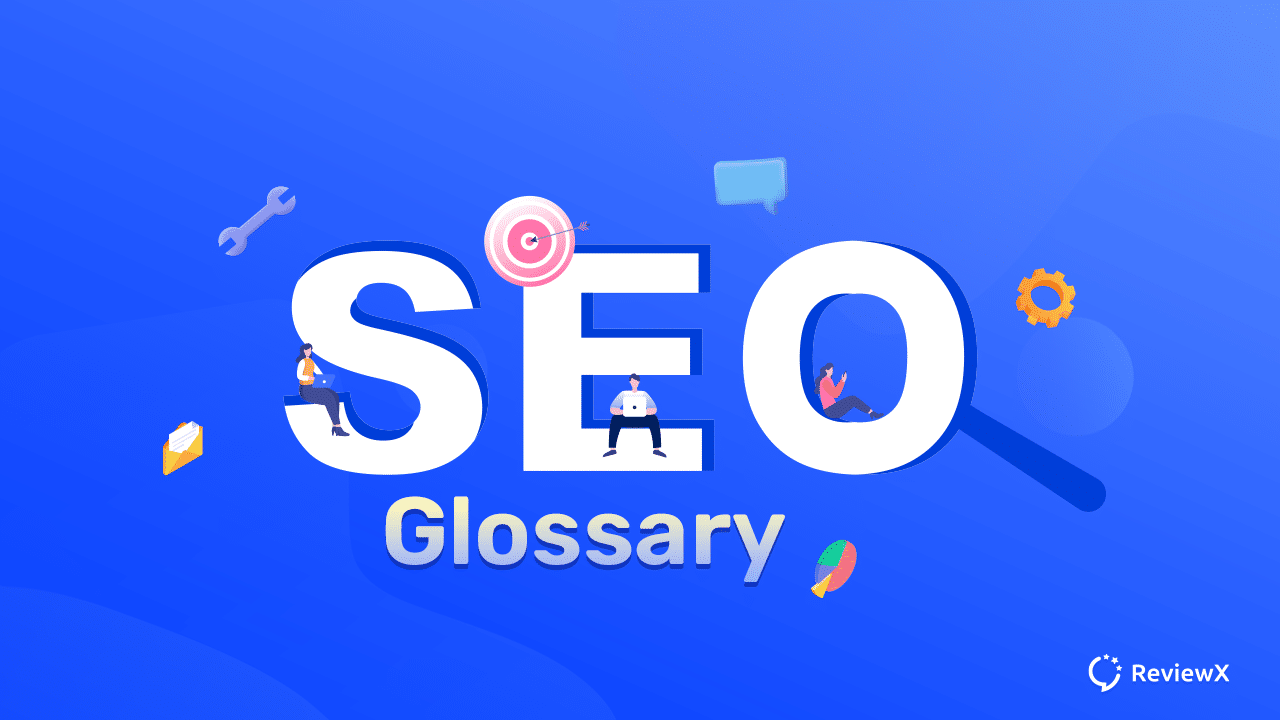
SEO Glossary: Essential Terms And Phrases You Should Know In 2023
- Published
- ReviewX Team
Are you new to the world of SEO and feeling overwhelmed by all the jargon and technical terms? Don’t worry, you’re not alone. That’s why having a comprehensive SEO glossary at your fingertips can be incredibly helpful. And if you’re looking for a complete guide that offers almost all SEO-related terms and phrases with explanations, you’ve come to the right place!

With our extensive glossary, you’ll be able to confidently navigate the complex world of SEO search terms and stay up-to-date on the latest trends and best practices. So why wait? Start exploring our comprehensive SEO glossary.
💡 The Ultimate SEO Glossary: Terms & Phrases You Must Know
Search engine optimization (SEO) continues to be an essential aspect of digital marketing. So it’s important to stay current in the digital marketing game by keeping up with the latest SEO terminology and phrases in the SEO glossary. However, from on-page optimization to technical SEO, the world of SEO terms glossary can be complex and ever-evolving.

So, this comprehensive guide covers essential SEO terms and phrases to help marketers and website owners improve their online visibility and search engine rankings.
‘A’ For Not Just ‘Apple’: Discovering All SEO Terms & Phrases With The ‘A’ Alphabet
Yes, in the SEO glossary world, ‘A’ doesn’t stand just for ‘Apple.’ Below we’ll let you know all the terms and phrases with examples that start with ‘A’. Let’s dive in.
Absolute URL (Absolute link, Absolute Path)
An absolute link is a type of link that directs users to other pages within your website. It includes the complete path to the file, HTML page, image, or any other resource you wish to link to.
Accelerated Mobile Pages (AMPs, Google AMP)
The AMP Open Source Project has developed an open-source HTML framework called AMP, which aims to speed up website loading times and enhance web page performance on mobile devices.
Web Pages created using the AMP format for mobile devices have certain limitations on their HTML/CSS and JavaScript, and they are automatically cached by Google AMP cache. Consequently, these pages can load instantly when a user performs a search on a mobile device.
Alt Tag (Alt Attribute, Alt Text)
The alt tag, also known as ‘alt text,’ is a feature in HTML that allows you to provide alternative text for an image. It is inserted within the image tag and is useful for describing the image so that it can be understood by screen readers and search engines. This is considered a best practice for enhancing accessibility and content relevance.
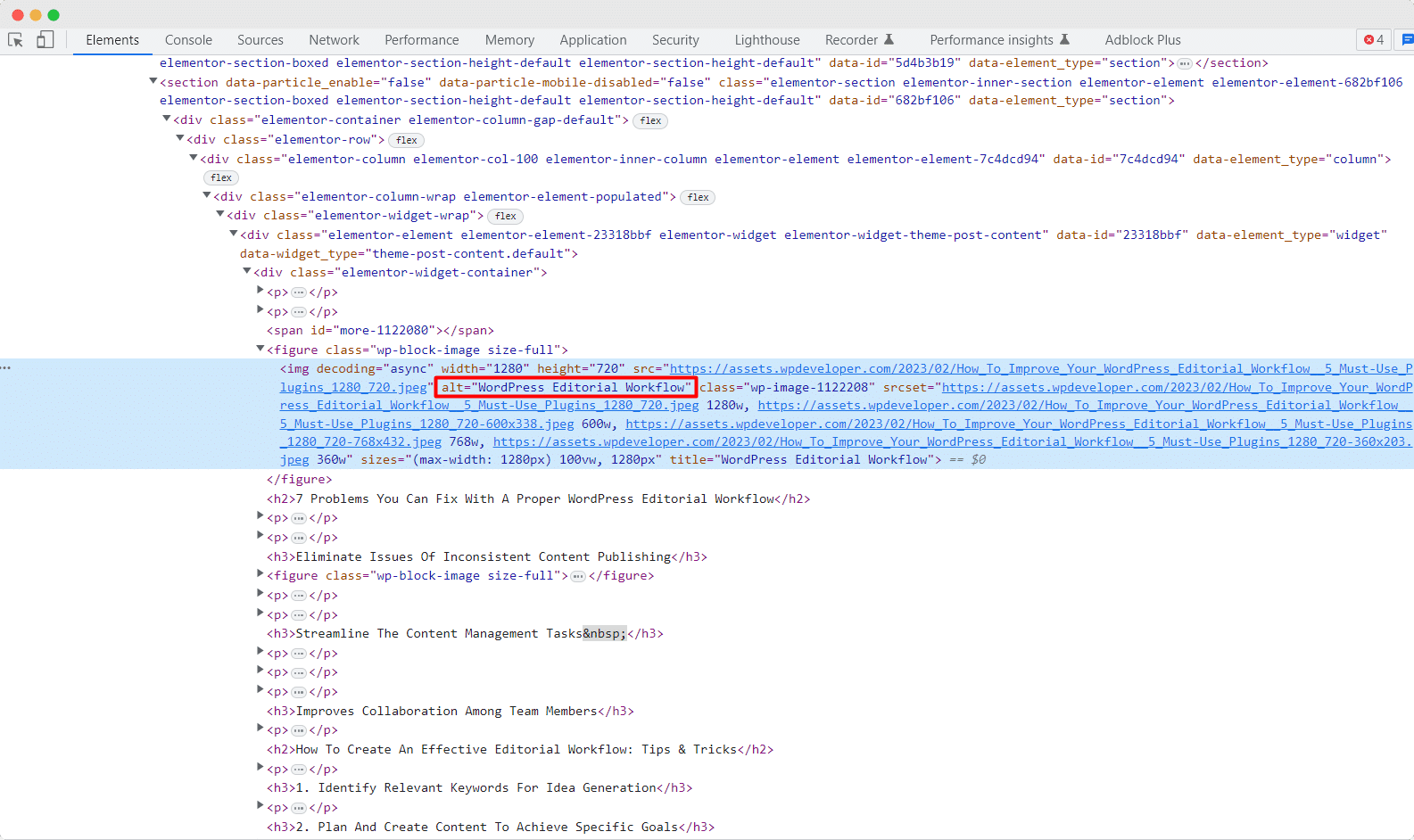
Using keywords in image alternate text, you can optimize them for Google’s image search service. Your images might even show up on Google Images or searches, which would drive a lot of traffic to your website.
Anchor Text
The clickable text in a hyperlink is known as anchor text in SEO Glossary. To optimize for SEO, it’s recommended to use natural language for the anchor text and avoid using exact match, overly spammy, or excessively keyword-rich text when linking to other websites.
Authority Site
A website that is trusted by its users, as well as by experts in the relevant industry. Such websites are known for publishing reliable information and linking to other trustworthy sites, earning a reputation as high-quality and knowledgeable websites.
Think Outside Of ‘B’ For ‘Ball’: Exploring Many B’s In SEO Glossary
When it comes to SEO, the letter ‘B‘ has much more significance than just ‘Ball’. In fact, there is an abundance of terms and phrases in the SEO glossary that start with the letter ‘B‘. Now, we’ll explore some of the essential ‘B’s‘ in the glossary of SEO terms and explain their importance in helping you improve your website’s visibility and search engine rankings.
Backlink
When another website links to your website, it creates a backlink, which serves as a ‘vote of confidence’ and a citation indicating that your website is a valuable and relevant source. This applies to both cases where you link to other websites or when others link to you, and it has a significant impact on SEO.
The number of backlinks to a particular website is a crucial factor in determining its page rank. And to be effective, a link should have both high link authority and high link relevance.
Bait and Switch
This phrase in SEO Glossary refers to a black hat technique that involves utilizing specific webpage content to achieve a high ranking in SERPs. Once satisfied with the ranking, the original content is replaced with something else, typically content that would not rank well. Keyword stuffing is another tactic that can fall under this SEO strategy.
Black Hat SEO
Now, you might be wondering what exactly is the black hat technique that we talked about while explaining the previous term. The Black Hat SEO employs techniques that violate search engine guidelines in an attempt to enhance page rankings.
These tactics involve generating content that aims to manipulate the search engine and often disregards the human audience and their experience. Examples of such tactics include keyword stuffing, cloaking, paid link usage, doorway pages, over-optimization, hidden text, bait, and switch.
Blog Commenting
Blog commenting used to be a widely used link-building technique that involved locating relevant blog posts in your niche and leaving a comment with a link. However, this strategy is now a topic of debate due to its overuse and widespread abuse, where individuals would spam blog articles with irrelevant comments and links.
Bounce Rate
This metric of the SEO glossary quantifies the number of visitors who visit your website but immediately exit without browsing additional pages or performing any actions. Typically, a lower bounce rate is more favorable, and a high bounce rate (exceeding 70%) is problematic and can cause significant impacts on your website’s rankings.
Brand Mention Link Building
This ‘brand mention’ link-building technique involves searching for web pages that refer to your brand, service, product, or personal name without including a hyperlink. After identifying these pages (preferably those with relevant content and decent domain authority), you can contact the website owner and request a backlink.
Branded Keywords
Branded keywords and phrases encompass your company or brand name, along with its different variations. The use of branded keywords in search engine marketing remains a topic of discussion, however. Typically, SEOs contend that investing in ranking for these keywords is unnecessary since employing SEO strategically can already result in high rankings in organic search results.
Breadcrumb Navigation
This refers to a form of secondary navigation that enables users to determine their position on your website. In each section of the website, there are links arranged horizontally that will take you to the preceding page.
It is advantageous for both user experience and crawling since it enhances the internal linking structure of large sites. Further, instead of displaying the website URL in the SERPs, these links generate user-friendly links that are legible. You can configure this using the Rank Math plugin if you use a WordPress website.
Broad Match Keyword
Broad match is a keyword matching option available in Google Ads that allows your ad to be displayed for searches that include the keyword or a similar one. This encompasses singular or plural forms, misspellings, phrases, stemming, synonyms, and related searches.
Broken Link
A broken link is essentially a link that fails to work, typically due to an incorrect URL or a deleted linked page. This often arises when a page is moved or renamed to another place. It can have adverse effects on your SEO and diminish your search engine rankings since it can prevent crawlers from indexing your website.

Let’s See What Terms And Phrases Starts With ‘C’ In SEO Glossary
In this section, we’ll explore some of the most significant terms and phrases that begin with the letter ‘C’ in the SEO glossary and their importance in optimizing your website for search engines.
Call To Action
In SEO, a call to action (CTA) is a term used to describe a website element, usually, a button, that prompts an immediate response for the visitors. Typically, CTAs use powerful language that persuades visitors to take a specific action, such as ‘Buy,’ ‘Register,’ ‘Write Now,’ ‘Call,’ or ‘Sign Up.’
Canonical URL
Having duplicate content on your website can cause confusion for search engines in determining which one to display in their results. To prevent this issue, you must designate one page as the original and set a canonical URL for all other pages that refer to the original. In the SEO glossary, canonical URL is important to the utmost and can ensure a website’s search engine visibility is not impacted negatively because of duplicate content.
You can do this by using a canonical tag (rel=”canonical”) in a piece of code that resembles this: <link rel=”canonical” href=”www.wpdeveloper.com” /> on each of the duplicate pages. This process effectively merges all pages into a single one as far as the search engine is concerned.
Cascading Style Sheets (CSS)
CSS is a programming language that specifies the visual appearance of an HTML document. Each website typically includes one or more CSS files that determine the size, color, layout, and other properties of each element. Through CSS, we can establish interactivity, animations, responsiveness, font styles, and numerous other features.

Click-Through Rate
Next, we have the click-through rate (CTR) which is a measurement that indicates the percentage of individuals who clicked on your advertisement, links, or website following its appearance in the search engine results pages (SERPs). To calculate CTR, you divide the number of clicks by the number of impressions.
Clickbait
Clickbait links are designed to lure users into clicking on them by utilizing anchor text or headline tags that pique the user’s curiosity. These links may include terms such as ‘amazing,’ ‘ultimate,’ ‘must-see,’ and ‘you won’t believe.’
While using clickbait could increase your links’ click-through rate (CTR), it is important to carefully consider its appropriateness for your specific niche before using it, as it may not be suitable for every audience.
Competitor Analysis
Performing a competitor analysis involves assessing competitors that target the same keywords or operate within the same niche as your business. By conducting this analysis, you can determine which tactics are effective in your industry and which areas require the most attention for your business. Through an SEO competitor analysis, you can also identify opportunities to learn how to surpass your competitors, achieve a higher SEO ranking and ensure boosted conversions.
Content Management System (CMS)
A content management system (CMS) is a software application or a set of applications that enable the creation, management, and publication of digital content, typically for websites. A CMS provides a user-friendly interface that allows non-technical users to add, edit, and delete content from a website without requiring extensive knowledge of coding or programming.
Content Marketing
In the SEO glossary, content marketing is a marketing strategy that involves creating and sharing high-quality content that is valuable, relevant, and consistent to attract and retain a specific target audience. The primary objective of content marketing is to drive profitable customer action by engaging with potential customers and building a strong relationship with them.

Content Spinning
Content spinning is a technique used to create multiple unique versions of an existing article or content piece by using software or manual methods to rewrite it. The goal of content spinning is to produce new content that appears to be unique while retaining the same core message as the original article.
Conversion Rate
The term ‘Conversion Rate’ is used to describe the percentage of visitors to a website who take a specific action that is desired by the website owner. This action could be anything from making a purchase, subscribing to a newsletter, filling out a form, or simply clicking on a particular link on the site. To calculate the conversion rate, you would divide the number of conversions by the total number of visitors to the website and then multiply that number by 100.

Conversion Rate Optimization
Conversion Rate Optimization (CRO) is the process of optimizing a website or landing page to increase the percentage of website visitors who complete a desired action, such as making a purchase, filling out a form, or subscribing to a newsletter.
Cornerstone Content
Cornerstone content is a term used in content marketing to refer to a collection of high-quality, comprehensive articles or pages on a website that serve as the foundation for the site’s content. Typically focused on topics that are central to the website’s purpose and are designed to provide valuable, in-depth information that addresses the needs and interests of the website’s target audience.
Cost Per Click
Cost Per Click (CPC) is a digital advertising model in which an advertiser pays a certain amount of money each time a user clicks on one of their ads. The higher the competition for a particular keyword, the higher the cost per click is likely to be.
Cross-Linking
Cross-linking, also known as internal linking, is a technique used in search engine optimization (SEO) to connect pages within a website by linking them together.
The process of cross-linking is crucial for SEO as it enables search engines to comprehend the associations among diverse pages on a website and how they interconnect with each other.
SEO Glossary: Terms And Phrases That Start With Alphabet ‘D’
A large number of essential terms and phrases start with the letter ‘D’ in the SEO glossary. Get familiar with them to optimize your website for search engines.
Deep Linking
Deep linking is the practice of directing a user to a specific, content-specific page or resource within a mobile application or website, rather than just the main page. Deep links are typically URLs that include specific information about the content they are linking to.
Direct Traffic
Direct traffic refers to visitors who arrive at a website by typing the website’s URL directly into their browser or by clicking on a bookmarked link. In other words, these visitors do not come from a search engine or another website that links to the website.

Disavow Links
Disavow links are a feature provided by Google that allows website owners or webmasters to tell Google that they do not want certain links pointing to their website to be considered as a ranking factor.
Dofollow Link
A dofollow link is a type of hyperlink that allows search engine crawlers to follow the link to the destination website, passing on ‘link juice’ and contributing to the destination website’s search engine rankings. In other words, do follow links are links that search engines will count as a factor in determining the ranking of the destination website.
Domain Authority
Domain Authority (DA), developed by Moz, is a score that predicts how well a website will rank on search engine results pages (SERPs). The score ranges from 0 to 100, with higher scores indicating a greater likelihood of ranking well on SERPs.

Duplicate Content
Duplicate content refers to content that appears in more than one location on the internet, either within a single website or across multiple websites. This can include content that is identical or substantially similar in wording, structure, or format.
Dynamic URL
A dynamic URL (Uniform Resource Locator) is a web address that contains parameters or variables, which are used to generate content dynamically from a database or other data source. In other words, the content displayed on a dynamic URL can change depending on the values of the parameters.

Time To See The SEO Glossary Terms Starting With ‘E’
Here we will explore important SEO terms starting with the letter ‘E’. By understanding these key terms, you can navigate the world of SEO and improve your website’s visibility online. So, let’s get started!
Editorial Link
Editorial links are links that are naturally included within the main content of a website, serving the same purpose as a citation. These links indicate that the content’s author recognizes you as a trustworthy source of knowledge on the subject and believes that their readers will find the link valuable and useful.
Email Outreach
Email outreach is a marketing technique that involves reaching out to individuals or businesses via email in order to establish a relationship, promote a product or service, or generate leads or sales.
Email outreach campaigns typically involve sending personalized emails to targeted individuals or businesses with the goal of starting a conversation.
Exact Match Anchor Text
Exact match anchor text refers to the use of a hyperlinked text that exactly matches the targeted keyword or phrase of the page that the link is pointing to. For example, this blog focuses on ‘SEO glossary’ as the main keyword; an exact match anchor text would be a hyperlink with the text SEO Glossary.
External Link
An external link, also known as an outbound link, is a hyperlink that points to a web page on a different website or domain than the one it is on. For example, if you are on a blog and there is a hyperlink that takes you to a news article on a different website, that hyperlink is considered an external link.
Terms And Phrases Of SEO Glossary Come With ‘F’
Welcome to the SEO Glossary that starts with the letter ‘F’! Let’s dive into the terms and phrases that start with the letter ‘F’ and how they relate to SEO.
Favicon
A favicon, short for ‘favorite icon’, is a small icon that appears in the browser tab and bookmarks of a website. Favicons are usually 16×16 pixels or 32×32 pixels in size and are in the format of a .ico file.
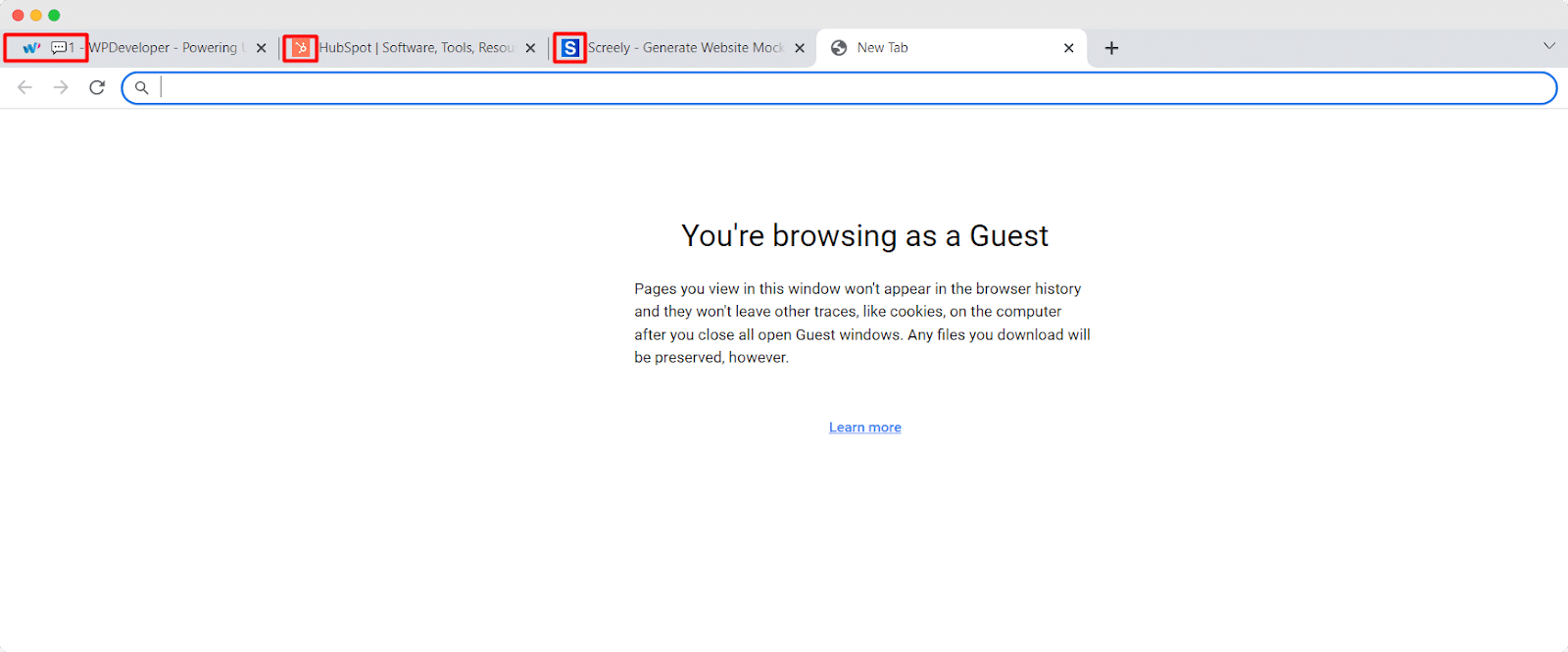
Favicons are used to provide a visual representation of a website or brand and can help users to easily identify a website when they have multiple tabs open in their browsers. It helps you set your website apart in a crowd of open tabs.
Featured Snippet
A featured snippet is a type of search result displayed at the top of Google’s search engine results page (SERP) in a special box, also known as ‘position zero.’ Featured snippets provide a concise summary of the answer to a user’s search query, often displaying a portion of content from a web page that Google deems as the most relevant and useful to answer the user’s question.
G Stands Not Only For Google In SEO Glossary
We will explore the letter ‘G’ and its significance in SEO terms beyond just Google. Let’s get a ride into the terms and phrases that start with the letter ‘G’ and their importance in the world of SEO.
Google Ads
Google Ads, formerly known as Google AdWords, is an online advertising platform developed by Google. It allows businesses and advertisers to create and display ads on Google’s search engine results page (SERP) and other websites that are part of the Google Display Network.
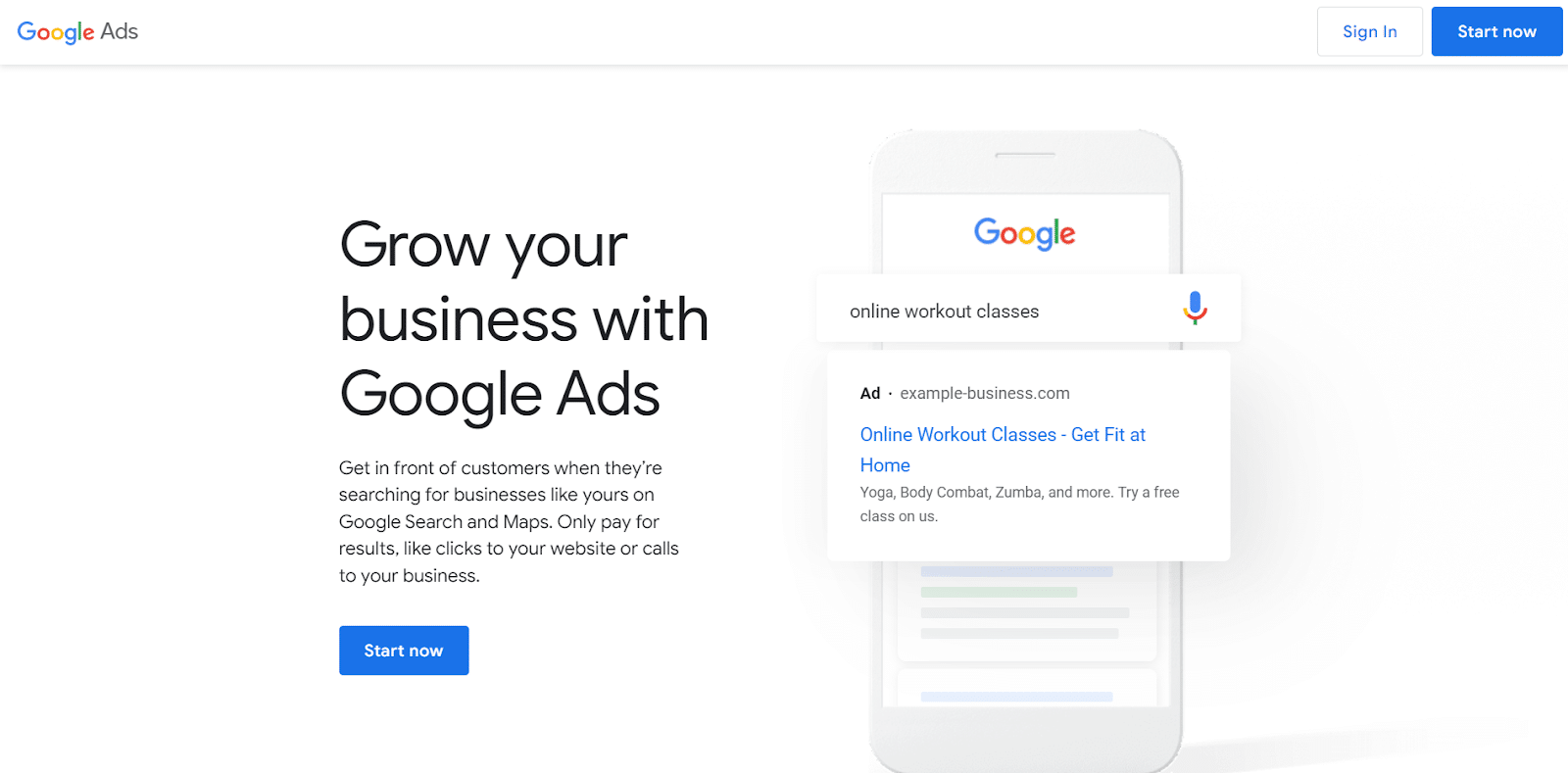
Google Alerts
Google Alerts is a free online tool provided by Google that allows users to monitor and receive email notifications for new search results based on specific search terms or keywords. Users can create custom alerts for topics they are interested in, such as their brand name, competitors, industry news, or any other relevant keywords.
Google Algorithm
Google Algorithm refers to the complex system of rules and algorithms used by the Google search engine to determine the relevance, quality, and ranking of web pages in search results.
Google Analytics
Google Analytics is a free web analytics tool that allows website owners and marketers to track and analyze website traffic and user behavior. It provides valuable insights into how visitors interact with a website, such as the number of visitors, page views, bounce rate, session duration, and other key metrics.
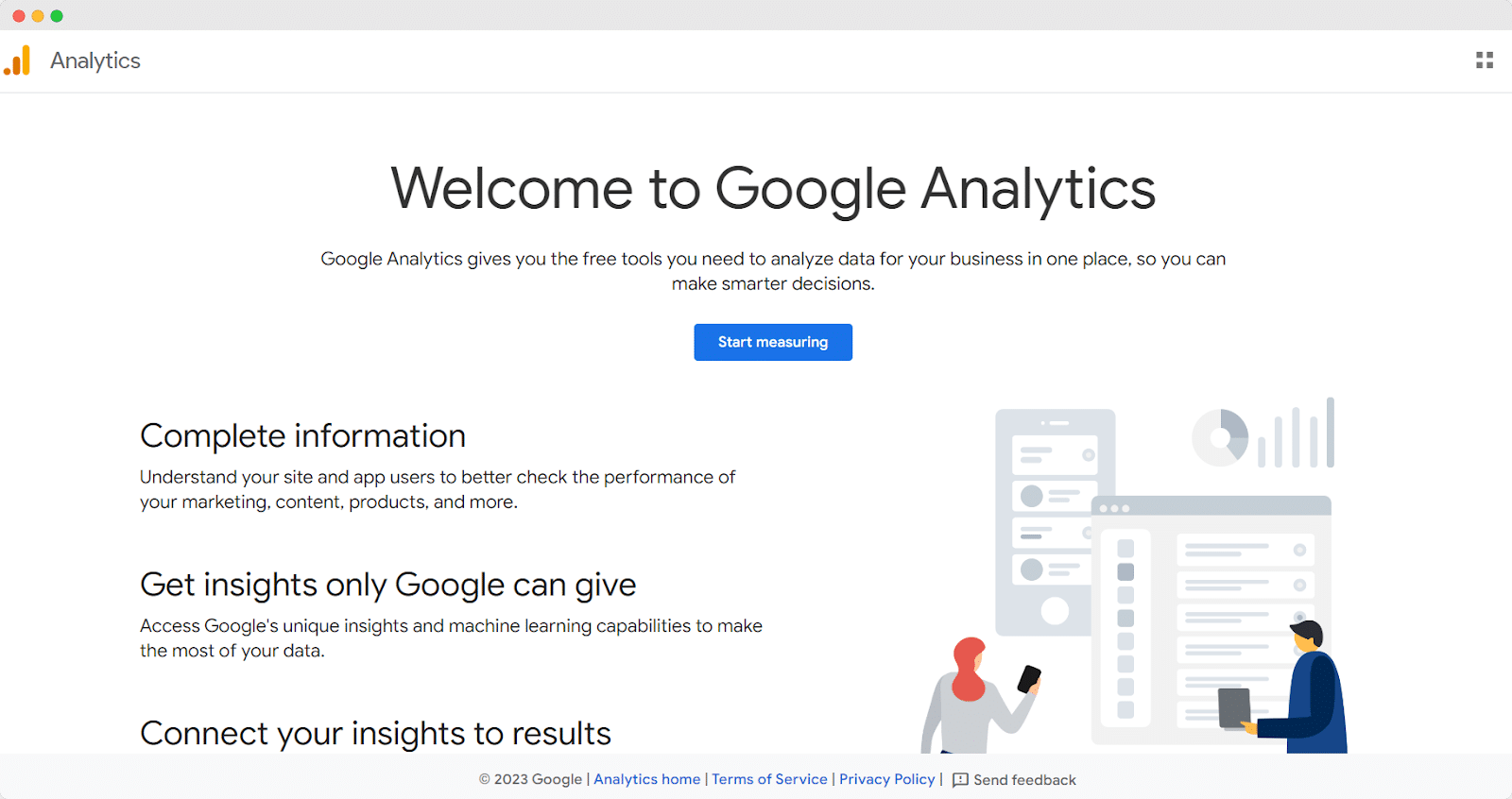
Google Keyword Planner
Google Keyword Planner is a free keyword research tool that allows users to find and analyze keywords related to their business or industry. It is primarily designed for users who want to create or improve their Google Ads campaigns, but it can also be used for general keyword research and content planning.
Google Search Console
Google Search Console (formerly known as Google Webmaster Tools) is a free web service provided by Google that allows website owners to monitor and improve their website’s presence in Google search results. It provides valuable data and insights on a website’s performance in search, including information on search traffic, search queries, backlinks, and technical issues.
Google Trends
Google Trends is a free web-based tool provided by Google that allows users to explore and analyze the popularity of search terms and topics across different regions and languages.

It provides valuable insights into the volume and trends of search queries over time, helping users identify popular topics, track changes in search interest, and compare the popularity of different search terms.
Grey Hat SEO
Grey hat SEO refers to a set of search engine optimization (SEO) practices that are not clearly defined as either ethical or unethical but may fall somewhere in between. Grey hat SEO tactics may technically be within the guidelines set by search engines, but they are often considered manipulative or spammy.
You can relate this to the Black Hat SEO term that we have explained earlier which refers to a set of practices that are considered unethical.
Guest Posting
Guest posting, also known as guest blogging, is a content marketing strategy where a writer creates and publishes an article or blog post on someone else’s website or blog. The guest author typically writes on a topic related to the host website’s audience and expertise, with the aim of gaining exposure and building credibility for themselves or their brand.
The ‘H’ Alphabet Unleashed In SEO Glossary
In the world of search engine optimization (SEO), there are several important terms and phrases that digital marketers need to understand in order to improve their website’s ranking and online visibility. One such group of terms is those that begin with the letter ‘H’, which can help you optimize your website and attract more organic traffic.
HTML Heading
HTML headings are tags used to structure and organize content on a web page. Six levels of heading out there, ranging from h1 to h6. These tags are typically used to provide a hierarchical structure to the content on a page, with the main heading (h1) representing the title or main topic of the page and subheadings (h2, h3, etc.) used to break the content into sections and subsections.
HTML Sitemap
An HTML sitemap is a web page on a website that lists and links to all the important pages of the site, in a hierarchical or categorized fashion, for the purpose of aiding users easily navigate and locate the content they are interested in. HTML sitemaps are usually created for human visitors, as opposed to XML sitemaps which are created for search engine bots.
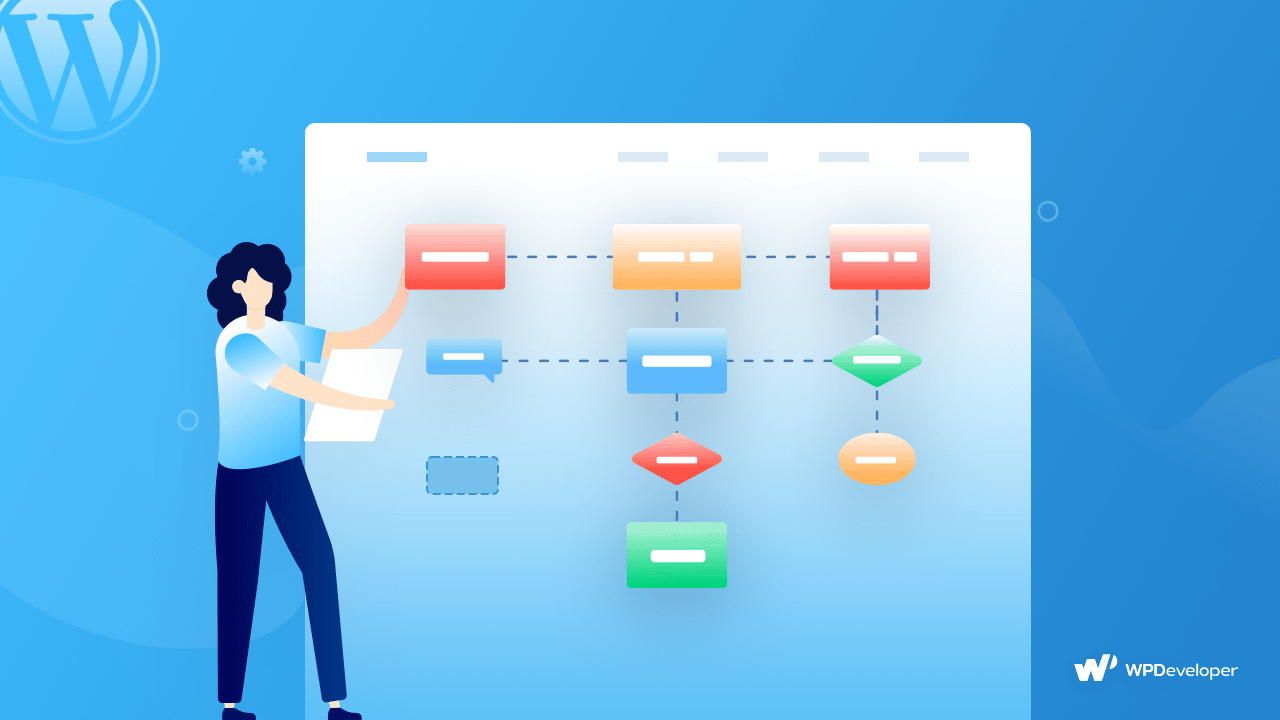
Hyperlink
A hyperlink, also known as a link, is a clickable element in a web page or electronic document that, when clicked, takes the user to another location within the same page, another page on the same website, or to a completely different website or document.
HTML Source Code
HTML source code refers to the underlying markup language that is used to create and structure content on a web page. HTML stands for Hypertext Markup Language, which is the standard language used for creating web pages and other web-based content.
‘I’ Is For Inclusive SEO Terms And Phrases In SEO Glossary
There are two SEO terms (Infographic and Informational SEO) starting with ‘I’ that are the most important among many of them. Let’s see what these terms are about and how it improves your SEO performance.
Infographic
An infographic is a visual representation of information, data, or knowledge, designed to present complex information in a simple, easy-to-understand format. Infographics typically use a combination of images, charts, graphs, icons, and text to communicate complex ideas and data in a visually appealing and engaging way.
Informational SEO
Informational SEO is a type of search engine optimization (SEO). It is focused on optimizing content for informational queries, which are searches that are designed to find information on a particular topic rather than to buy a product or service.
‘K’ For Keyword And Many More In SEO Glossary
In this SEO glossary section, we’ll explore some of the most important ‘K’ terms and phrases. By incorporating these concepts into your SEO strategy, you can help ensure that your website is welcoming and accessible to all.
Keyword Cannibalization
Keyword cannibalization is a situation in which multiple pages on a website are targeting the same keyword or set of keywords, causing them to compete with each other for search engine rankings. This can result in a negative impact on the website’s overall search engine optimization (SEO) efforts and can lead to a loss of traffic and rankings.
Keyword Density
Keyword density is a metric used in search engine optimization (SEO). It refers to the percentage of times a target keyword or phrase appears on a webpage in relation to the total number of words on the page.
Keyword Research
The process of keyword research entails the identification and analysis of the search terms that individuals use to find information, products, or services on the internet. Keyword research is an essential part of search engine optimization (SEO) and digital marketing, as it provides valuable insights into the topics, questions, and interests of potential customers.

Keyword Stuffing
Time and again, you might read the term ‘Keyword Stuffing’ in this blog, but what does it mean? Keyword stuffing is a black hat SEO technique that involves excessively using target keywords or phrases on a webpage in an attempt to manipulate search engine rankings. Keyword stuffing can include adding keywords unnaturally and repetitively throughout the content, hidden text or links, and/or irrelevant keywords or phrases.
Explore SEO Terms And Phrases With The Letter ‘L’
Search engine optimization (SEO) is constantly evolving, with new strategies and techniques emerging all the time. As digital marketers strive to stay ahead of the curve, it’s essential to stay up-to-date on the latest SEO terms and phrases. One important group of terms to know is those that begin with the letter ‘L’.
Latent Semantic Indexing (LSI) Keyword
Latent Semantic Indexing (LSI) keywords are related keywords and phrases that are semantically connected to a primary keyword or topic. LSI keywords are not exact matches of the primary keyword but are conceptually related, helping search engines to better understand the content and context of a web page.
Link Building
Link building is the process of acquiring hyperlinks from other websites to your own website. Hyperlinks or simply links are the clickable text or image on a web page that takes you to another web page or website.

Link Juice
Link juice is a term used in search engine optimization (SEO) to describe the value or authority passed from one webpage to another through a hyperlink or link. When a web page links to another webpage, it is seen as a vote of confidence, and some of the authority of the linking web page is passed on to the linked web page.
Local SEO
Local SEO (Search Engine Optimization) is a digital marketing strategy that focuses on optimizing a website or online presence to improve visibility and rankings in local search results. Local SEO aims to promote businesses to nearby customers by targeting specific geographic locations, such as cities, regions, or neighborhoods.
Long-Tail Keyword
A long-tail keyword is a specific phrase or search query that consists of three or more words, often with a lower search volume and less competition than broader, more general keywords. Long-tail keywords are usually more targeted and specific to a particular niche, industry, or product, and they can be used to capture highly relevant and qualified traffic to a website.
SEO Terms And Phrases With ‘M’ You Should Know
As digital marketing continues to grow in importance, search engine optimization (SEO) remains a crucial element in driving online traffic to your website. SEO requires a deep understanding of the most important terms and phrases used in the industry, and the ‘M’ alphabet has many essential concepts to explore.
Meta Keywords
Meta keywords are a type of meta tag that was used in the past to provide search engines with a list of relevant keywords for a web page. The meta keywords tag was placed in the HTML code of a web page and included a list of keywords that were relevant to the content on that page.
Meta Refresh
Meta refresh is an HTML tag that allows a web page to automatically redirect to a different page after a specified amount of time. The meta refresh tag is placed in the head section of an HTML document and uses the ‘http-equiv’ attribute to specify the type of refresh to use.
Metadata
Metadata refers to data that provides information about other data. It describes the characteristics of a particular piece of data, such as when it was created, who created it, what format it’s in, and how it’s structured.

Meta Description
A meta description is an HTML tag that provides a brief summary of a web page’s content. It is a short snippet of text that appears below the URL in search engine results pages (SERPs) and gives readers a preview of what they can expect to find on the page.
‘N’ Stands For More Than Nofollow In SEO Glossary Vocabulary
When it comes to search engine optimization (SEO), there are a lot of terms and phrases to keep track of. One group of terms that begins with the letter ‘N’ is particularly important for digital marketers to understand. While ‘nofollow’ is a well-known concept in SEO, there are many other ‘N’ terms that are equally important.
Nofollow Link
A nofollow link is a hyperlink that has a rel=”nofollow” attribute added to its HTML code. This attribute tells search engines not to follow the link to the target website and not to pass any authority or ‘link juice’ to the linked site.
Noopener and Noreferrer
Noopener and noreferrer are two HTML attributes that can be used in conjunction with hyperlinks to control how the linked website is opened and how information about the referring website is passed.
Get Familiar With Terms And Phrases Start With ‘O’
Search engine optimization (SEO) is a constantly evolving field, with new strategies and techniques emerging all the time. To stay ahead of the curve, it’s important to keep up with the latest SEO terms and phrases. One group of terms that is important to understand is those that begin with the letter ‘O’.
Off-Page SEO
Off-page SEO refers to the optimization activities that are performed outside of your website. The purpose is to improve the site’s ranking and search engine visibility. Off-page SEO primarily involves building high-quality backlinks to your website from other authoritative websites.
On-Page SEO
On-page SEO refers to the optimization activities that are performed on your website in order to improve your website’s search engine rankings and visibility. On-page SEO primarily involves optimizing the content and structure of your website pages to make them more relevant and user-friendly for search engines and users.
Organic Rank
The term ‘organic rank’ or ‘organic search ranking’ is used to indicate the position of a webpage or website on the search engine results page (SERP) for a specific search query. This position is determined by the relevance and authority of the web page’s content in relation to the search query, as well as other factors such as the web page’s backlinks, site speed, mobile-friendliness, and more.
Organic Traffic
Organic traffic refers to the visitors who come to your website through unpaid, natural search engine results. These visitors find your website by clicking on one of the links that appear in the search engine results page (SERP) when they search for a particular keyword or phrase.
Let’s Discuss The Terms And Phrases That Start With ‘P’
In the world of search engine optimization (SEO), it’s important to stay up-to-date on the latest terms and phrases to ensure that your website remains competitive in search engine rankings. One group of terms that is particularly important to understand is those that begin with the letter ‘P’.
Page Authority
Page Authority (PA) is another metric developed by Moz that predicts how well a specific web page is likely to rank on search engine results pages (SERPs). The scores for Page Authority span from 0 to 100, and higher scores signify an increased probability of achieving a good ranking on SERPs.
Page Cloaking
You might have already learned about link cloaking, but ever heard of page cloaking? It is a deceptive SEO technique in which a web page is presented differently to search engines and human visitors. The purpose of page cloaking is to manipulate search engine rankings by showing different content to search engines than what is shown to human visitors.
SEO Glossary: Terms And Phrases That Start With Alphabet ‘R’
SEO is a complex and constantly changing field, with new terms and strategies emerging all the time. One group of terms that is particularly important to understand are those that begin with the letter ‘R’.
Redirect
A redirect is a technique to send a user or search engine from one URL to another. Redirects can be temporary or permanent, and they are used for a variety of reasons, such as website maintenance, website restructuring, and SEO optimization.

Return On Investment
Return on investment (ROI) is a financial metric that measures the profitability of an investment in relation to its cost. ROI is expressed as a percentage, and it represents the amount of return on an investment relative to the investment’s cost.
Other SEO Terms & Phrases That You Need To Know
Search Engine Optimization is a constantly evolving field that requires a deep understanding of the many technical terms and phrases used within it. Let’s explore the remaining SEO terminologies one by one.
Scrapping
Web scraping, also known as data scraping or screen scraping. Web scraping can be used to collect a variety of data, including product information, pricing data, customer reviews, and more.
Technical SEO
Technical SEO refers to the process of optimizing a website’s technical aspects so that search engines can crawl, index, and rank it efficiently. Technical SEO focuses on the backend of a website and includes a range of technical elements that affect a website’s search engine rankings.
User Intent
User intent refers to the reason why a user is searching for a particular keyword or phrase on a search engine. It is the underlying motivation or purpose behind a search query. Understanding user intent is crucial for creating content that satisfies the user’s needs and preferences.
User-generated Content
User-generated content (UGC) refers to any type of content, such as text, images, videos, or reviews, that has been created and shared by users of a particular platform or website. UGC is content that is produced by the audience or users of a product, brand, or service rather than the brand itself.
Vertical Search Engine
A vertical search engine, also known as a specialized search engine or topical search engine, is a type of search engine that focuses on a specific industry, topic, or vertical. Instead of searching the entire web like general search engines such as Google and Bing, vertical search engines only crawl and index websites that are related to a particular niche.
Video Optimization
Video optimization refers to the process of optimizing video content to improve its visibility and ranking in search engine results pages (SERPs). This process involves making changes to various elements of the video, including the title, description, tags, and video file itself, to make it more appealing and discoverable to both search engines and users.
White Hat SEO
After black and grey, now it’s time to understand what white hat SEO is. The term ‘white hat SEO’ refers to the utilization of legitimate and ethical optimization techniques for enhancing the search engine ranking of a website. This approach to SEO focuses on creating high-quality content that provides value to users, as well as following the guidelines and best practices set by search engines.
XML Sitemap
An XML sitemap is a file that lists all the pages of a website and provides metadata about each page, such as when it was last updated, how frequently it is updated, and its relative importance compared to other pages on the website. This file is submitted to search engines to help them crawl and index a website’s pages more efficiently.
SEO Glossary: Boost Your Online Visibility To Elevate Your SEO Game
Staying up-to-date with the latest search engine optimization (SEO) terms and phrases is essential for beginners looking to improve their online visibility and attract more organic traffic. By incorporating these terms and strategies into your SEO efforts, you can elevate your online visibility and boost your overall search engine rankings.
So bookmark this SEO Glossary blog right away and elevate your SEO game! Hope you enjoyed this comprehensive guide. And to get more tricks and tips on SEO, feel free to subscribe to our blog and join our Facebook Community.
Increase sales with customer reviews
Showcasing customer experiences helps build trust and drive higher sales.
Related Articles

Judge.me is Leaving WordPress – Here’s the Best Judge.me Alternative (and How to Migrate Easily)
If you’re using Judge.me on your WooCommerce store, there’s an important update you can’t ignore: Judge.me is officially
![10 Best WooCommerce Review Plugins for Your Store [FREE & Paid]](https://reviewx.io/wp-content/uploads/2025/03/10-Best-WooCommerce-Review-Plugins-for-Your-Store-FREE-Paid-300x169.jpg)
10 Best WooCommerce Review Plugins for Your Store [FREE & Paid]
Choosing the best review plugin for your store can be a hassling job. You have to do a

Free vs. Paid WooCommerce Reviews Plugin: Which One to Use?
Review plugins make your WooCommerce work easier and WordPress gives you numerous options in the market. Some of